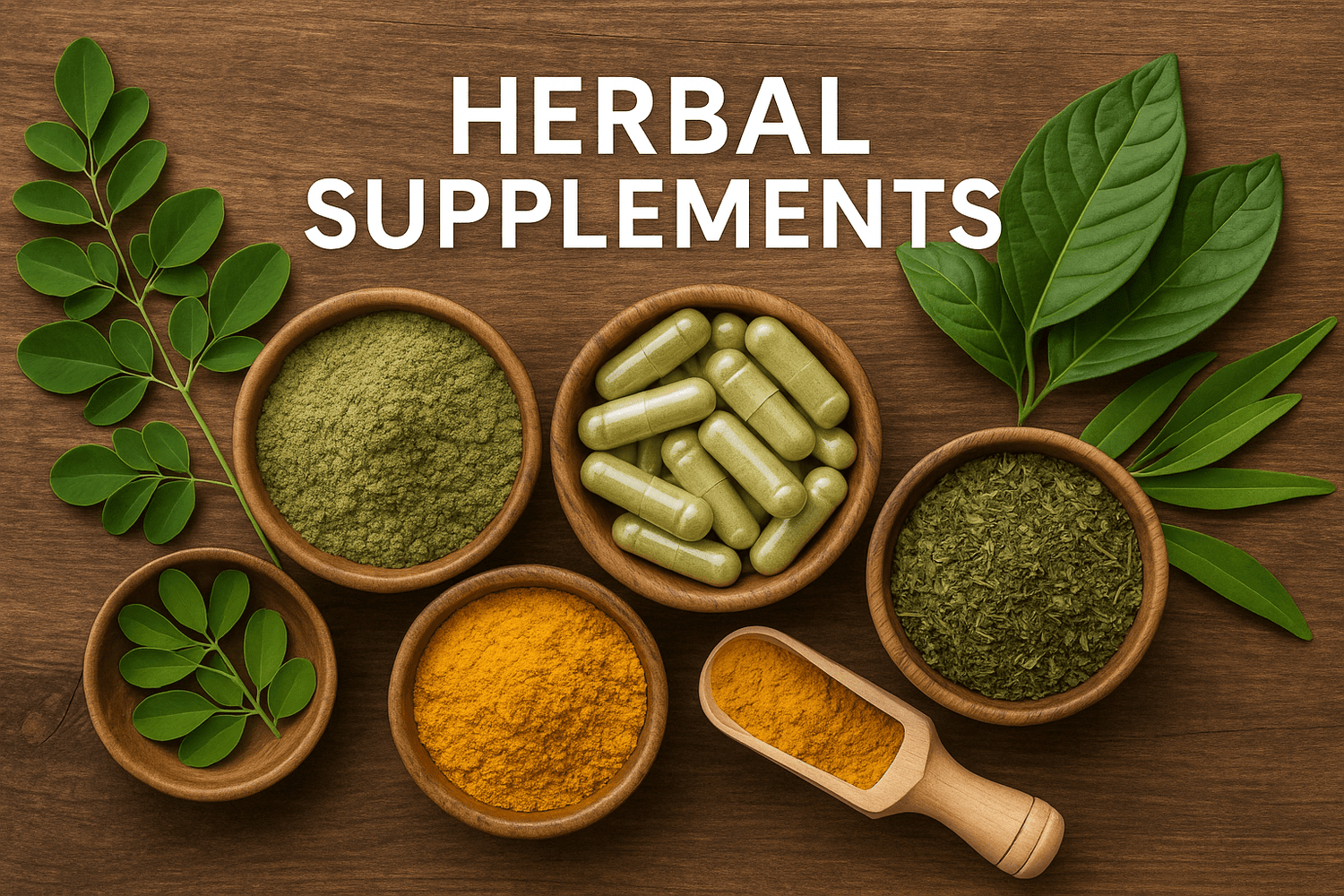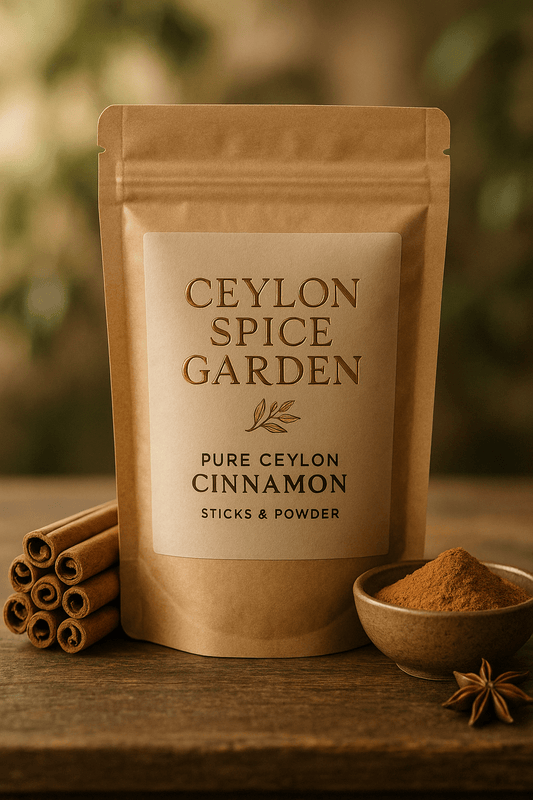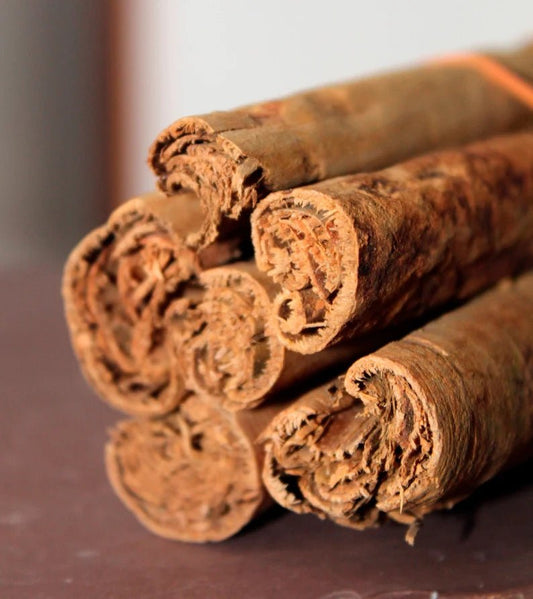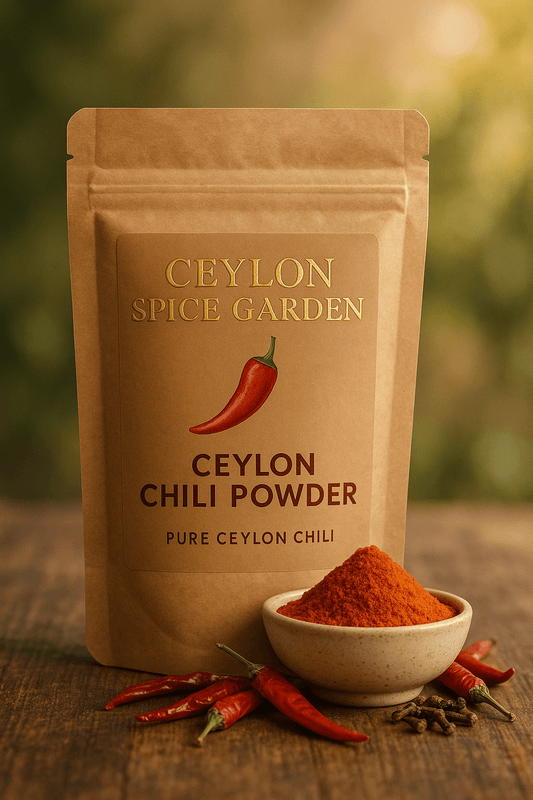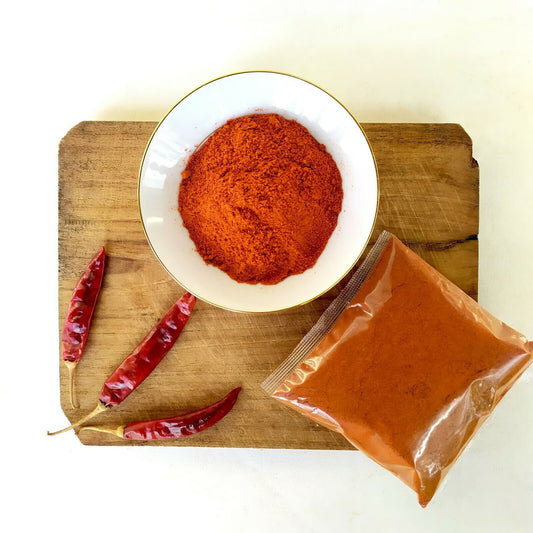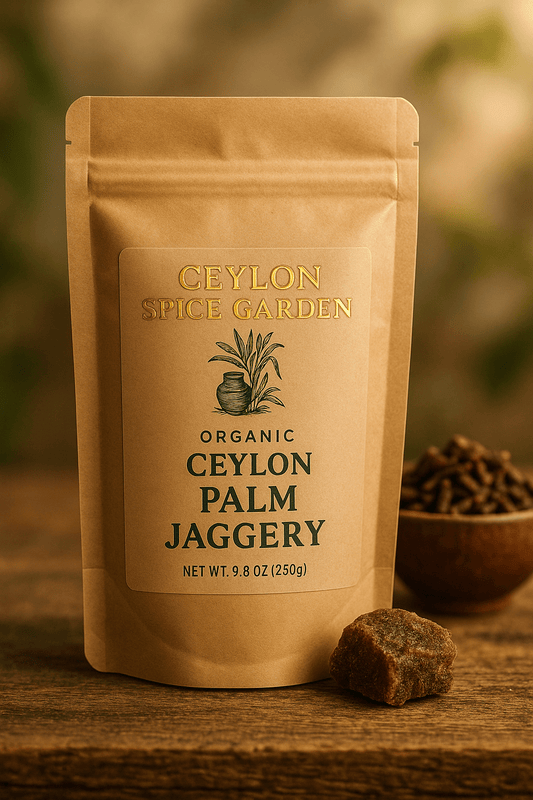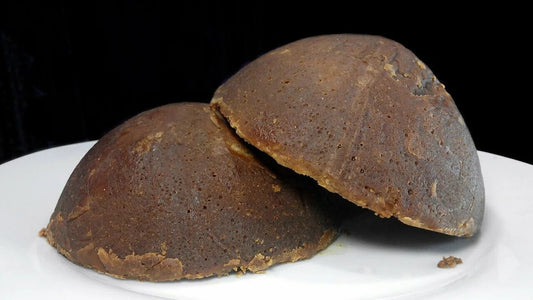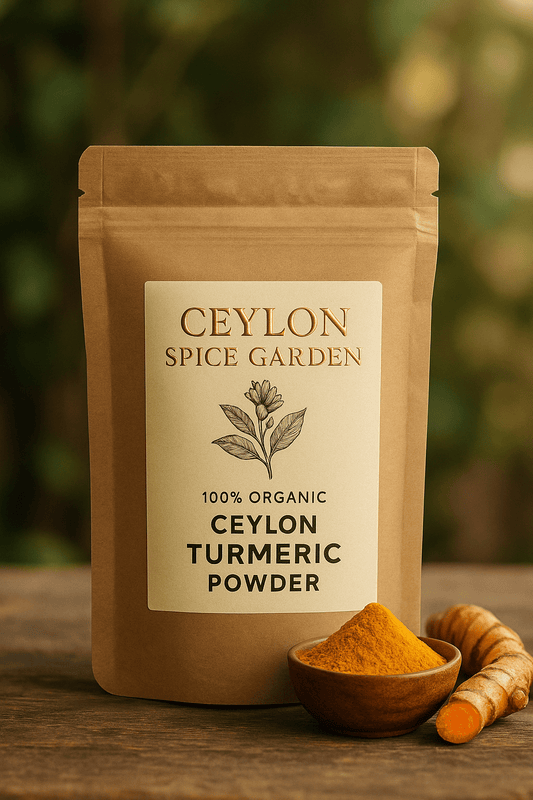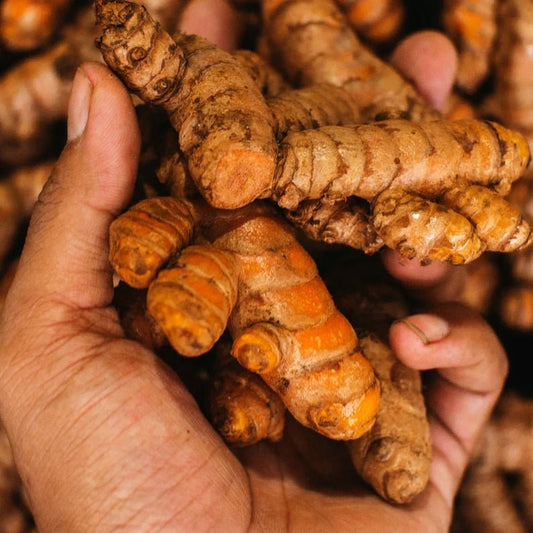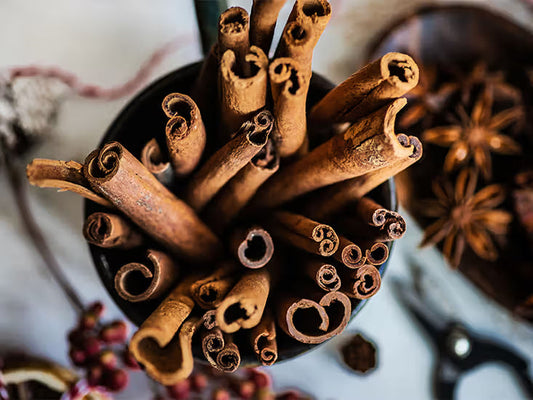
How to Start a Ceylon Spice Garden at Home | Complete Growing Guide | Ceylon Spice Garden
How to Start a Ceylon Spice Garden at Home: Complete Beginner's Guide
Table of Contents
- Why Grow Ceylon Spices at Home?
- Essential Requirements for Ceylon Spice Gardening
- Best Ceylon Spices for Beginners
- Planning Your Ceylon Spice Garden
- Step-by-Step Planting Guide
- Climate Considerations and Adaptations
- Container Gardening for Ceylon Spices
- Care and Maintenance
- Harvesting and Processing
- Common Challenges and Solutions
- Year-Round Growing Calendar
- Frequently Asked Questions
Why Grow Ceylon Spices at Home?
Learning how to start a Ceylon spice garden at home opens up a world of culinary possibilities while connecting you to Sri Lanka's rich agricultural heritage. Growing your own Ceylon spices ensures you have access to the freshest, most potent flavors while saving money and enjoying the therapeutic benefits of gardening.
Benefits of Home Ceylon Spice Gardening
- Superior Freshness: Harvest spices at peak potency for maximum flavor
- Cost Savings: Grow expensive spices like cardamom and cinnamon at home
- Quality Control: Know exactly how your spices are grown and processed
- Year-Round Supply: Continuous harvest with proper planning
- Therapeutic Benefits: Enjoy the mental health benefits of gardening
- Educational Value: Learn about Sri Lankan agricultural traditions
Essential Requirements for Ceylon Spice Gardening
Before starting your Ceylon spice garden, understanding the basic requirements will ensure your success. Most Ceylon spices thrive in warm, humid conditions with well-draining soil and partial to full sunlight.
| Requirement | Optimal Conditions | Minimum Acceptable | Solutions for Challenging Conditions |
|---|---|---|---|
| Temperature | 75-85°F (24-29°C) | 65-90°F (18-32°C) | Greenhouse, grow lights, seasonal growing |
| Humidity | 60-80% | 40-90% | Humidity trays, misting, grouping plants |
| Sunlight | 6-8 hours partial sun | 4-6 hours | Grow lights, reflective surfaces |
| Soil pH | 6.0-7.0 | 5.5-7.5 | Soil amendments, container growing |
Best Ceylon Spices for Beginners
When learning how to start a Ceylon spice garden at home, choosing the right spices for your skill level and growing conditions is crucial. Here are the most beginner-friendly Ceylon spices that adapt well to home cultivation.
Ceylon Curry Leaves
Growing Time: 6-8 weeks for first harvest
Space Required: Medium pot or garden bed
Special Notes: Fast-growing, multiple harvests, tolerates various conditions
Ceylon Lemongrass
Growing Time: 8-10 weeks
Space Required: Large pot or garden space
Special Notes: Rapid growth, natural pest deterrent, aromatic foliage
Ceylon Ginger
Growing Time: 8-10 months
Space Required: Deep containers or raised beds
Special Notes: Requires consistent moisture, shade tolerance
Ceylon Turmeric
Growing Time: 10-12 months
Space Required: Large containers or garden beds
Special Notes: Long growing season, beautiful flowers, high value
Ceylon Cardamom
Growing Time: 2-3 years to fruit
Space Required: Large space, 6+ feet height
Special Notes: Requires specific humidity, shade-loving, high value
Ceylon Cinnamon Tree
Growing Time: 3-5 years for bark harvest
Space Required: Large containers or garden space
Special Notes: Tree form, requires pruning, long-term investment
Planning Your Ceylon Spice Garden
Successful Ceylon spice gardening begins with careful planning. Consider your available space, local climate, and which spices you use most frequently in your cooking.
Space Planning Guidelines
- Small Space (Balcony/Windowsill): Focus on herbs like curry leaves, lemongrass, and small ginger plants
- Medium Space (Patio/Small Yard): Add turmeric, larger ginger varieties, and dwarf cardamom
- Large Space (Full Garden): Include cinnamon trees, full-sized cardamom, and dedicated spice beds
Pro Tip: Start Small and Expand
Begin with 2-3 easy-to-grow spices and gradually expand your garden as you gain experience. This approach allows you to learn proper care techniques without becoming overwhelmed.
Step-by-Step Planting Guide
Complete Planting Process
Site Selection and Preparation
Choose a location with morning sunlight and afternoon shade. Ensure good drainage and protection from strong winds. Test soil pH and amend if necessary to achieve 6.0-7.0 pH range.
Soil Preparation
Create a well-draining, nutrient-rich growing medium by mixing equal parts quality potting soil, compost, and perlite or coarse sand. Add organic matter like aged manure or worm castings.
Seed/Plant Acquisition
Source authentic Ceylon spice seeds or plants from reputable suppliers. Consider starting with tissue culture plants for faster establishment and guaranteed authenticity.
Planting Process
Plant at appropriate depths (typically 2-3 times seed diameter). Space plants according to mature size requirements. Water gently after planting and maintain consistent moisture.
Initial Care Setup
Install support structures if needed, set up watering systems, and create humidity-enhancing measures. Monitor daily for the first few weeks to ensure proper establishment.
Climate Considerations and Adaptations
Understanding how to adapt Ceylon spice growing to your local climate is essential for success. Most gardeners outside tropical regions will need to make accommodations for temperature and humidity differences.
Temperate Climate Adaptations
- Seasonal Growing: Grow as annuals or bring containers indoors during winter
- Greenhouse Cultivation: Maintain tropical conditions year-round
- Cold Protection: Use row covers, mulching, and wind barriers
- Humidity Enhancement: Group plants together, use humidity trays, regular misting
Climate Reality Check: Some Ceylon spices may not fruit or produce harvestable quantities in non-tropical climates. Focus on leaf harvests (curry leaves, lemongrass) and rhizome crops (ginger, turmeric) for best results in temperate zones.
Container Gardening for Ceylon Spices
Container gardening offers excellent control over growing conditions and is often the best approach for Ceylon spice cultivation in non-tropical climates.
| Spice | Minimum Container Size | Optimal Container Type | Special Requirements |
|---|---|---|---|
| Curry Leaves | 5-gallon pot | Deep ceramic or plastic | Good drainage, regular pruning |
| Ginger | 3-gallon wide pot | Wide, shallow container | Horizontal space for rhizome spread |
| Turmeric | 5-gallon pot | Deep, wide container | Deep soil for root development |
| Cardamom | 15-gallon minimum | Large, deep container | Height clearance, humidity control |
Care and Maintenance
Proper care is crucial when learning how to start a Ceylon spice garden at home. Consistent attention to watering, feeding, and environmental conditions will ensure healthy, productive plants.
Daily and Weekly Care Tasks
Daily Tasks
Check soil moisture levels, monitor for pests, ensure adequate humidity, and observe plant health indicators.
Weekly Tasks
Deep watering as needed, light fertilizing during growing season, pruning and deadheading, pest and disease inspection.
Monthly Tasks
Soil testing and amendment, major pruning and shaping, repotting if necessary, harvest planning and execution.
Seasonal Tasks
Climate protection setup, seed starting for succession planting, major soil amendments, plant division and propagation.
Harvesting and Processing
Knowing when and how to harvest your Ceylon spices is essential for maximum flavor and potency. Each spice has specific harvest indicators and processing requirements.
Harvest Timing Guide
- Curry Leaves: Harvest young, tender leaves regularly to encourage growth
- Ginger: Harvest after 8-10 months when leaves begin to yellow
- Turmeric: Harvest rhizomes 10-12 months after planting
- Lemongrass: Cut stalks when they reach pencil thickness
- Cardamom: Harvest pods when they're 3/4 mature but still green
Common Challenges and Solutions
Understanding common challenges in Ceylon spice gardening helps you prevent problems and maintain healthy plants throughout the growing season.
Top Challenges and Solutions
- Low Humidity: Use humidity trays, group plants, install misting systems
- Temperature Fluctuations: Provide thermal mass, use row covers, consider greenhouse growing
- Pest Issues: Practice integrated pest management, encourage beneficial insects
- Slow Growth: Check soil nutrition, ensure adequate light, maintain proper moisture
- Poor Germination: Ensure fresh seeds, proper temperature, consistent moisture
Year-Round Growing Calendar
Following a seasonal calendar helps you plan your Ceylon spice garden activities and ensures optimal timing for planting, care, and harvest activities.
Monthly Planning Guide
Spring (March-May)
Start seeds indoors, prepare outdoor beds, transplant seedlings after last frost, begin regular fertilizing schedule.
Summer (June-August)
Monitor water needs closely, provide shade during extreme heat, harvest leafy spices regularly, maintain pest control.
Fall (September-November)
Harvest root crops, reduce watering frequency, prepare plants for winter, collect and store seeds.
Winter (December-February)
Protect plants from cold, reduce fertilizing, plan next year's garden, maintain indoor plants under grow lights.
Start Your Ceylon Spice Journey
Ready to begin your Ceylon spice garden? Visit Ceylon Spice Garden for authentic seeds, plants, and expert growing advice to ensure your success.
Grow Your Own Piece of Sri Lanka
Starting a Ceylon spice garden at home connects you to centuries of Sri Lankan agricultural wisdom while providing fresh, aromatic spices for your kitchen. With patience, proper care, and the right knowledge, you can successfully cultivate these exotic treasures in your own space.
